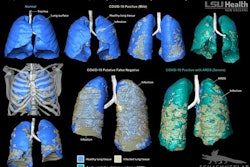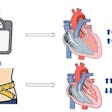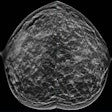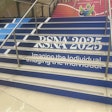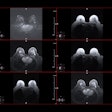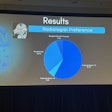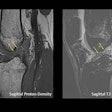Dear AuntMinnie Member,
A faster PET protocol that produces images in minutes rather than hours could make imaging more effective in detecting brain pathology in patients suspected of having Alzheimer's disease, according to an article that was our top story for the past week.
Researchers from the University of Alabama at Birmingham described their technique for performing early-frame amyloid PET -- which detects brain activity in the first few minutes after radiotracer injection -- and how it can demonstrate abnormal accumulations of tau and amyloid proteins.
In other PET news, South Korean researchers describe their work using choline-PET/CT for localizing primary hyperparathyroidism in patients prior to surgery. And if you've been having trouble getting reimbursement for SPECT/CT exams, the Society of Nuclear Medicine and Molecular Imaging is offering a letter template you can use to contest these denials.
These stories and more are available in our Molecular Imaging Community.
Errors in oncology
Another one of our top stories for the week was a study led by Dr. Andrew Rosenkrantz of NYU Langone Health that analyzed the high percentage of radiology malpractice cases that are derived from oncology imaging. The authors found that oncology imaging's share of malpractice allegations was far higher than oncology's share of total imaging cases.
Screening for seniors
How old should individuals be before they stop getting cancer screening exams? While most clinical guidelines advise that screening stop in people who have less than 10 years of expected life expectancy, that may not be good advice.
Indeed, researchers from Johns Hopkins University found that older individuals who got screening exams like mammography still had a lower risk of all-cause mortality. The findings indicate that it may still be worthwhile to screen older individuals.
In other news, researchers from the University of Pennsylvania found that women with higher body mass index also were at greater risk of having an interval cancer between mammography screening rounds.
And in a study from this week's American Society of Clinical Oncology meeting, researchers found that while many breast cancer patients are using complementary therapies, this fact seems to be going underrecognized by their care providers.
More news is available in our Women's Imaging Community.






